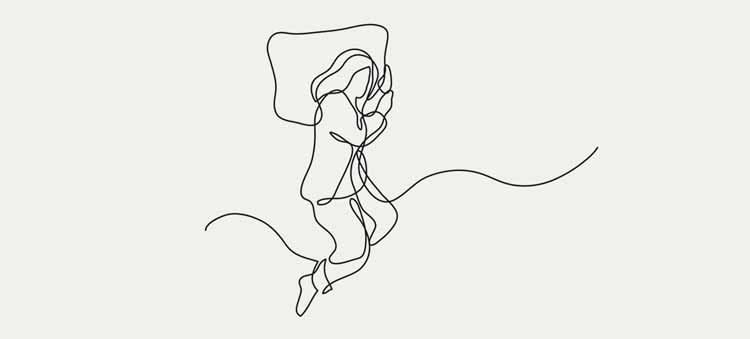Cognitive Behavioral Therapy: A Powerful Tool for Menopause

Menopause is not easy but you know that. It can bring many physical and emotional challenges to a woman’s life – but Cognitive Behavioral Therapy (CBT) has proven to be a valuable tool for helping women adjust during this transitional period. Let’s explore the many benefits of CBT for menopausal women, provide tips and resources on CBT treatments.
Stress and Anxiety During Menopause
Menopause doesn’t mean you’ll automatically experience stress and anxiety. But there are other midlife challenges that happen around this time such as caring for aging parents, dealing with teenage children, or coping with work demands. Experiencing hot flushes and night sweats can add to the stress and anxiety, making these symptoms even harder to manage.
Stress often arises when we feel overwhelmed by demanding situations and doubt our ability to cope. In response, our body releases adrenaline, increasing our heart rate and breathing to prepare for action. Although this response is natural, constantly activating it due to everyday stressors can negatively impact our health and well-being.
Anxiety, too, is a normal reaction to threatening situations. However, it becomes problematic when we perceive non-dangerous situations as threats, especially when feeling stressed. Reducing anxiety and stress is essential for improving well-being and minimizing the impact of menopausal symptoms on daily life.
Understanding CBT for Anxiety and Stress during Menopause
Cognitive-behavioral therapy (CBT) for anxiety and stress addresses the connections between physical symptoms, thoughts, emotions, and behavior. Our thought patterns in specific situations influence how we feel and act, and these reactions can further intensify bodily responses.
Anxious thinking, which often involves expecting the worst outcomes, plays a significant role in triggering and maintaining anxiety. This type of thinking tends to catastrophize, overestimating the chances of a worst-case scenario and underestimating our ability to cope, leading to heightened anxiety. For instance, people with social anxiety may assume others will judge them negatively, resulting in avoidance of social situations. Similarly, those experiencing panic attacks might interpret anxiety symptoms like rapid breathing and increased heart rate as signs of an imminent heart attack or fainting spell, which in turn increases anxiety and panic.
During menopause, it’s common to experience palpitations alongside hot flushes. Misinterpreting these normal physical sensations as indications of severe illness can cause excessive worry about one’s health. Keeping a diary can help determine if palpitations are related to hot flushes or stressful situations, and provide clarity.
Using Cognitive and Behavioral Strategies to Manage Anxiety and Stress
Cognitive and behavioral strategies can help develop a calmer and more accepting perspective on a situation, leading to more helpful responses. If you’re feeling anxious or stressed, write down your thoughts, emotions, and behavioral reactions. Once you’ve identified a typical anxious thought, assess if it’s overly negative, overestimating the threat, or underestimating your ability to cope. Keep in mind that anxious or stressful thoughts aren’t facts, but simply one viewpoint of a situation.
Ask yourself questions like:
- Is there a real threat?
- What would a calm person think in this situation?
- What would you tell a close friend in the same situation?
- Have you managed similar situations before?
Evaluate your behavioral responses to anxiety and stress. If you’re overworking, consuming too much food or alcohol, or avoiding certain people or activities, consider more helpful alternatives. Reflect on activities that make you feel calm or content, even if they’re small (e.g., relaxing, practicing yoga, walking, exercising, calling a friend, or reading a book). Aim to incorporate more of these activities into your daily routine, even for just a brief period.
Strive for a balance between rest and activity, and practice pacing yourself throughout the day.
Understanding Hot Flushes and Night Sweats
Hot flushes and night sweats are common symptoms experienced by women during menopause. They can cause discomfort, sleep disruption, and anxiety. These symptoms are primarily caused by fluctuating estrogen levels, which can affect the body’s temperature control mechanisms. Stress can also exacerbate these symptoms, making it essential to find ways to reduce stress and relax.
Cooling Down Strategies
To help manage hot flushes, consider the following tips:
- Wear light, layered clothing made of natural fabrics like cotton.
- Use cotton sheets with a lower thread count to stay cool at night.
- Identify and avoid potential triggers such as coffee, hot drinks, spicy foods, alcohol, and temperature changes.
Cognitive Behavioral Therapy for Hot Flushes
CBT can help manage hot flushes by addressing the links between physical symptoms, thoughts, feelings, and behavior. Developing calmer, more neutral responses can help you feel more in control and able to cope with hot flushes.
Paced Breathing Technique
Paced breathing, or slow and deep breathing from the stomach, is an essential part of the CBT approach for managing hot flushes. This technique helps in calming down the body and should be practiced regularly. When experiencing a hot flush, relax your shoulders, breathe slowly from your stomach, and focus on your breathing.
Cognitive Strategies
Identify your thoughts and worries related to hot flushes, such as social embarrassment, lack of control, and concerns about disrupted sleep. Recognize any overly negative or catastrophic thinking and consider more balanced alternatives. By addressing these thoughts, CBT can help you reduce the distress associated with hot flushes and improve your overall well-being.
Related: Are Menopause Symptoms Worst at Night?
Menopause can be a challenging time for women, but Cognitive Behavioral Therapy offers a valuable resource for managing both physical and emotional symptoms. By understanding the benefits of CBT, accessing resources, and learning from others’ experiences, you can take control of your well-being and thrive during this significant life transition.
Techniques and Strategies
Paced Breathing and Social Support
Using paced breathing during a hot flush can help shift your focus from the flush to your breath, allowing you to think of calming and neutral thoughts. Try to remain in social situations and avoid avoiding activities, as this can prevent you from learning to manage your symptoms. Challenging negative social images and attitudes about menopausal women can also help improve self-esteem. Talking openly about menopause with friends and family can help reduce stigma.

Managing Night Sweats and Sleep Problems
Dealing with night sweats and sleep problems during menopause requires a two-pronged approach: optimizing sleep habits and applying cognitive-behavioral strategies for hot flushes.
Sleep Hygiene Tips
- Limit light exposure in the evening, including from electronic devices.
- Limit caffeine and alcohol intake, which can impact sleep quality.
- Maintain a cool sleeping environment, especially if experiencing night sweats.
- Develop a relaxing bedtime routine to help signal sleep readiness.
- Maintain a regular sleep pattern, avoiding naps after 3 p.m.
- Continue with planned activities the following day, even after a poor night’s sleep.
CBT Strategies for Night Sweats and Sleep
Similar to hot flushes, managing night sweats involves addressing unhelpful thinking patterns and stressors. Practice relaxation and paced breathing during the day and as part of your bedtime routine. If woken up by a night sweat, use cognitive-behavioral strategies to remain calm and focused on your breathing. Replace catastrophic thoughts with calmer, more helpful thoughts.
